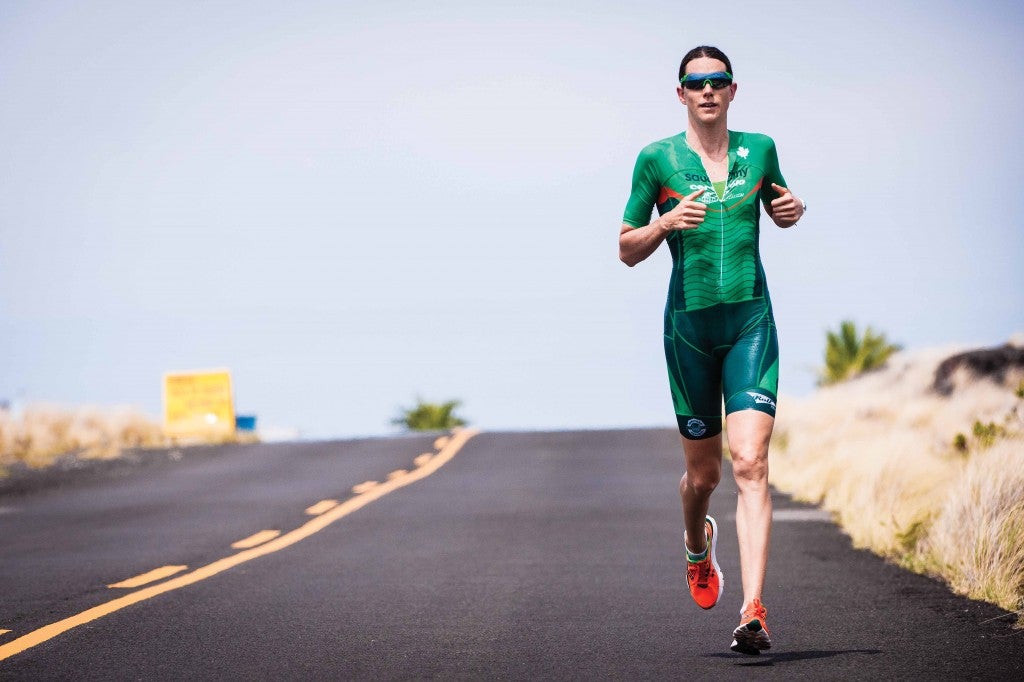How To Train And Race In The Heat

Heather Wurtele on a training run in Kona. Photo: John David Becker
Racing in hot temps? Follow this approach for maximum performance gains.
You don’t have to set up your trainer in a sauna or splurge on a Kona training camp to properly prep for racing in warm weather. Research shows that simply doing light to moderate exercise in the heat can actually have a major effect on acclimation and performance. The study protocol included cycling at a submaximal intensity (50 percent of VO2max) for 10 days. The intensity was kept low to cause sufficient heat stress to induce acclimation but not enough to induce training adaptations for the highly trained athletes. Subjects performed these heat sessions in addition to their regular training. The results showed a 5 percent performance improvement in subsequent time trials in both cool and hot environments compared with pre-test time trails.
Although this study only looked at cyclists under very controlled conditions, we can carry over some lessons to training adaptions in general.
RELATED: Tips For Training In Hot Weather
Account for the cost of recovery. While the extreme “more is better” predilection of a triathlete may cause one to immediately plan his threshold training or mile repeats in a heated environment to improve on those purported 5 percent gains, keep post-session recovery time in mind.
For one, consider why we (most of us, at least) don’t do weekly 100-mile ride/10-mile bricks at race pace. The requisite recovery cost is so high that it nearly takes us out of any quality training until next week’s megabrick!
Submaximal exercise is enough to stimulate heat adaptions. There’s no need to perform key interval sessions or monster race-pace training in the heat. Light training in warmer temperatures can be enough to stimulate adaptions.
Save the breakthrough sessions for optimal conditions. If your goal is to hit certain paces or wattages, you’re better off giving yourself every advantage in terms of recovery, fueling and optimal (not hot) temperatures.
RELATED: Biggest Mistakes When Racing In The Heat
Don’t Be That Triathlete
We asked triathletes to identify their biggest mistake when racing in the heat. Overwhelmingly the responses centered on hyponatremia (sodium imbalance) due to chugging plain H2O (and forgoing electrolytes) in the days preceding, during and/or after the race. The consequences? Trips to the medical tent, DNF’s and hospital visits.
The Heat Index
Were you a part of one of these record-breaking days?
Ironman China 2009:
Temperature reportedly broke 110 degrees, and the heat index was 120-plus!
70.3 Muncie 2012:
100-plus-degree temps forced race officials to shorten the race.
Louisville 2010:
Louisville is hot every year, but in 2010 IM LOU had a 16 percent DNF rate, at the time the highest on record.*
Ironman St. George 2012:
At the now-shortened IM St. George, heat was only one complicating factor that ultimately led to the highest DNF rate in history. Racers also had to contend with 40 mph winds, and ultimately 29 percent of the field did not make it to the finish.*
*Source: Raymond Britt at Runtri.com
RELATED – Coach’s Note By Lance Watson: Wasted Performances Due to Dehydration?